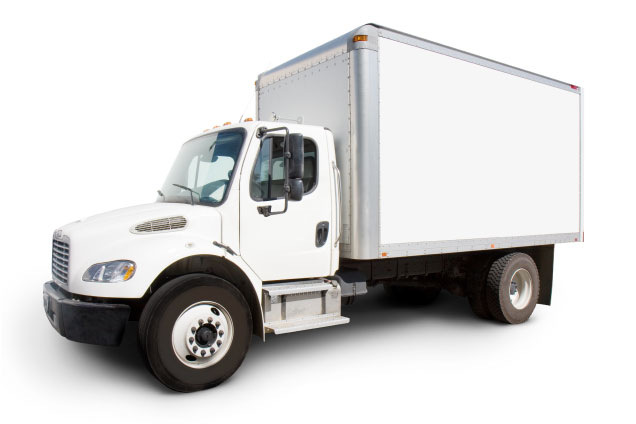How to Solo Lift Heavy Objects Without Strain
Posted on 04/06/2025
How to Solo Lift Heavy Objects Without Strain: The Ultimate Guide
Lifting heavy objects alone is a common requirement, whether you're rearranging furniture, moving home, or managing tasks in a warehouse or garage. However, improper technique can lead to back injuries, strains, or worse. This comprehensive guide will teach you how to solo lift heavy objects without strain, providing practical, safety-first advice that anyone can apply. Let's explore the strategies, precautions, and tools that will make solo lifting not only possible, but also safe and efficient.

Why Learning to Lift Alone Matters
Understanding safe lifting techniques isn't just about preventing pain or injury. It's about becoming self-sufficient, protecting your health, and ensuring you can tackle tasks efficiently whenever needed. Mastering the art of lifting heavy items by yourself empowers you at home and in the workplace, and promotes a proactive approach to safety.
Understanding the Risks: Injuries and Strain
Before attempting to move or lift heavy objects on your own, it's crucial to understand the potential risks. Common injuries caused by poor lifting habits include:
- Back strains or sprains
- Herniated discs
- Shoulder or neck injuries
- Knee injuries
- Muscle tears
Preparing to Lift: Assess, Plan, and Position
1. Evaluate the Object
Before you touch the object, inspect and estimate its weight, shape, and potential balance points. Ask yourself:
- Is the object too heavy or awkward for one person?
- Can the load be broken down into smaller parts?
- Are there sharp edges or slippery surfaces?
2. Plan Your Path
Ensure the area around the object and your proposed path is clear of obstacles. Map out your route in advance to avoid tripping or being forced to twist your body awkwardly.
- Remove clutter like rugs, cords, or small furniture
- Plan rest spots if the distance is long
- Make sure doorways and stairways are accessible
3. Proper Positioning and Stance
Your starting position determines the efficiency and safety of your lift.
- Stand close to the object with feet shoulder-width apart for balance
- Bend at the knees, not the waist, keeping your back straight and chest lifted
- Keep your arms as close to your body as possible
- Face the object squarely; never twist your body as you lift
Key Techniques for Solo Lifting Heavy Items
1. The Proper Lifting Method
Follow these steps for the classic safe lifting technique:
- Squat down: Keep your heels on the ground and bend at the hips and knees
- Grip firmly: Grasp the object securely using your whole hand
- Lift with your legs: Engage your quadriceps and glutes to rise, not your back
- Keep the load close: Hold the object as close to your torso as possible
- Move slowly and deliberately: Avoid sudden jerks or fast movements
2. The High-Low Approach
For tall or awkward objects, use a staggered grip: one hand low and one high. This helps you better control and balance the item during movement. Always keep the heavier end closest to your body.
3. Pivot Instead of Twisting
Twisting your spine under load is a common mistake that can cause injury. Instead, pivot your feet to change direction, keeping your hips and shoulders aligned.
4. Use Your Hips and Core
Your legs and core muscles are far stronger than your back muscles. Brace your core, keep your chest up, and drive the movement from your hips. This technique helps to solo lift heavy objects safely and effectively while minimizing risk of strain.
5. Don't Overreach
If the object is above chest height, use a step stool or ladder, never overreach. Always keep elbows slightly bent and, if you must reach, ensure your balance is firmly maintained.
Essential Tools & Equipment for Solo Lifting
To reduce physical strain when lifting by yourself, take advantage of equipment designed to do the heavy work. The right tools allow for better leverage, protect your body, and make single-person heavy lifting genuinely manageable.
1. Dollies and Hand Trucks
A dolly or hand truck is a must-have for solo lifting heavy boxes and furniture. Simply tip the object onto the dolly platform and secure it before wheeling it away with minimal effort.
2. Lifting Straps and Forearm Forklifts
These straps allow you to use your body's strongest muscles, transferring part of the weight to your shoulders, arms, and forearms. Forearm forklifts are especially effective for large, bulky items as they offer balance and make lifting feel lighter.
3. Furniture Sliders and Movers
Furniture sliders are compact pads that fit beneath objects, allowing you to glide heavy pieces across flooring. This minimizes both physical exertion and damage to surfaces.
4. Lever Bars and Pry Tools
Lever bars give you a mechanical advantage for raising one edge of a heavy object, making it easier to slip in a dolly, slider, or to reposition.
5. Lifting Belts and Support Braces
While not a substitute for proper technique, a lifting belt can provide lumbar support, improve posture, and reduce risk of lower back injury during solo lifting tasks.
Body Maintenance: Warming Up and Stretching
1. Warm Up Before Lifting
Jumping straight into heavy lifting increases your susceptibility to muscle pulls and strains. Perform a quick warm-up:
- 5 minutes of brisk walking or gentle cardio
- Shoulder and arm circles
- Hip rotations and side bends
2. Stretch Your Muscles
Dynamic stretching before the lift and static stretching after helps keep your muscles flexible. Focus on:
- Hamstrings and quadriceps
- Glutes and lower back
- Shoulders and neck
Tips for Solo Lifting Heavy Objects Without Injury
- Never rush -- move slowly and cautiously
- Wear non-slip shoes to maintain traction
- Use protective gloves for a better grip and to avoid cuts
- Keep your head up and eyes forward during the lift
- Breathe continuously -- exhale during exertion, inhale during the setup
- Take short breaks if you feel fatigue setting in
- Use teamwork whenever possible for items over 50 lbs or overly awkward shapes
Common Mistakes to Avoid When Lifting Solo
Even experienced lifters can fall into bad habits. To avoid injury and maximize efficiency, steer clear of these errors:
- Lifting with a rounded back or locked knees
- Twisting or jerking while lifting or carrying
- Carrying objects too far away from the body
- Ignoring warning pains or signals from your body
- Not wearing proper footwear or gloves
- Attempting to lift beyond your capacity
- Forgetting to plan the lift and path in advance
How to Move Odd-Shaped, Large, or Awkward Objects Alone
Some objects, such as mattresses, large appliances, or irregularly shaped items, pose additional challenges. To move heavy, awkward objects solo without strain, try these strategies:
- Wrap and protect corners using blankets or foam to avoid wall/floor damage
- Use the "walking" method: tilt and pivot the item in alternating directions
- If top-heavy, move slowly to maintain control and upright position
- Create makeshift handles with rope, belts, or lifting straps
- Leverage stairways or ramps by sliding rather than lifting, whenever possible
Preventing Injury: Listen to Your Body
No matter your strength or experience, your body knows its limits. Watch for warning signs such as:
- Sudden sharp or stabbing pain
- Numbness or tingling
- Loss of grip strength
- Dizziness or feeling faint
- Persistent soreness after lifting
When to Seek Help or Use Professional Services
While learning how to solo lift heavy items is invaluable, there are times when it's best to ask for help or hire professionals:
- Extremely heavy, fragile, or expensive objects (e.g., pianos, large appliances, valuable antiques)
- Narrow corridors, steep stairs, or uneven terrain
- Existing health issues, recent surgeries, or chronic pain
- No access to proper lifting equipment or aids
Conclusion: Master the Art of Solo Heavy Lifting Without Strain
Learning how to solo lift heavy objects without strain is an essential life skill for both home and workplace. By following proper lifting techniques, utilizing the right tools, and respecting your physical limits, you can move and lift large items safely and efficiently. Preparation, patience, and self-care are the keys to preventing injury and empowering yourself to tackle heavy-lifting tasks with confidence.
Remember: plan ahead, lift smart, and treat your body with respect. Whenever in doubt, never hesitate to use aids or ask for help. Healthy, injury-free lifting lets you enjoy the satisfaction of getting the job done without strain.

Frequently Asked Questions About Solo Heavy Lifting
1. Can stretching help before and after lifting?
Absolutely. Stretching prepares your muscles for exertion and aids recovery, reducing stiffness and injury risk. Focus on your legs, lower back, and arms.
2. What's the best way to lift a heavy box by myself?
Squat, keep your back straight, lift with your legs, and hold the box close to your body. If too heavy, use a dolly or split the contents.
3. Is it safe to lift something alone over 50 lbs?
If you're healthy and use proper technique and equipment, it can be safe. Assess your own limits and use aids like hand trucks or straps for heavier loads.
4. How do I move heavy furniture in small spaces alone?
Use furniture sliders, clear your path, and take your time. Break down furniture when possible for easier transport.
5. What should I avoid when lifting heavy objects solo?
Avoid twisting, jerking, or lifting with your back. Don't rush, and never attempt more than you can safely handle. Listen to your body and always use good form.
Resources & Further Reading
- OSHA Ergonomics and Lifting Safety
- National Safety Council: Back Safety
- Mayo Clinic: Preventing Back Pain
Use this guide as your blueprint for lifting heavy objects by yourself without strain--and stay safe out there!




